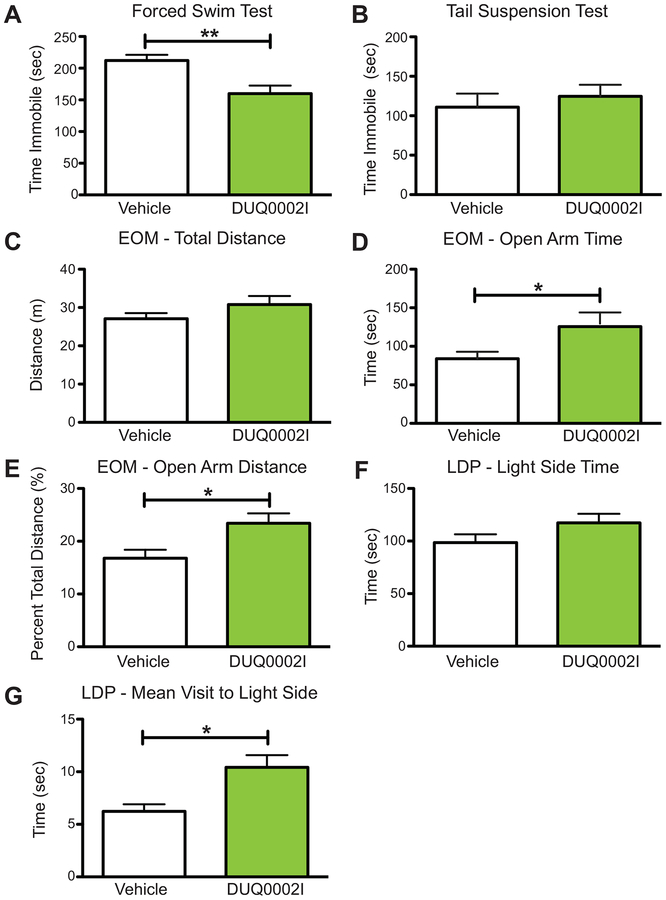Figure 3.
Initial characterization of the antidepression-like and anxiolytic-like effects of cyanobacterial fraction DUQ0002I in male animals via ICV administration. (A) Mice treated with DUQ0002I (n=18) decrease time immobile compared to vehicle (n=18) in the forced swim test. (B) Mice treated with DUQ0002I (n=9) show no change in time immobile compared to vehicle (n=9) in the tail suspension test. (C) Mice treated with DUQ0002I (n=18) show no changes in total distance traveled compared to vehicle (n=17) in the elevated zero maze. (D) Mice treated with DUQ0002I (n=18) show increased time spent in the open arms of the elevated zero maze (EOM) assay compared to vehicle (n=17). (E) Mice treated with DUQ0002I (n=18) also travel a greater percent of total distance traveled in the open arms of the EOM compared to vehicle (n=17). (F) Mice treated with DUQ0002I (n=19) show a trend (p=0.1203) of spending more time in the light side of the Light-Dark Preference (LDP) test during the latter half of the test compared to vehicle (n=15). (G) Mice treated with DUQ0002I (n=19) also show a higher average mean visit to the light side of the LDP test during the latter half compared to vehicle (n=15). Un-paired t-tests, *p<0.05, **p<0.01. Data shown as mean ± SEM.

